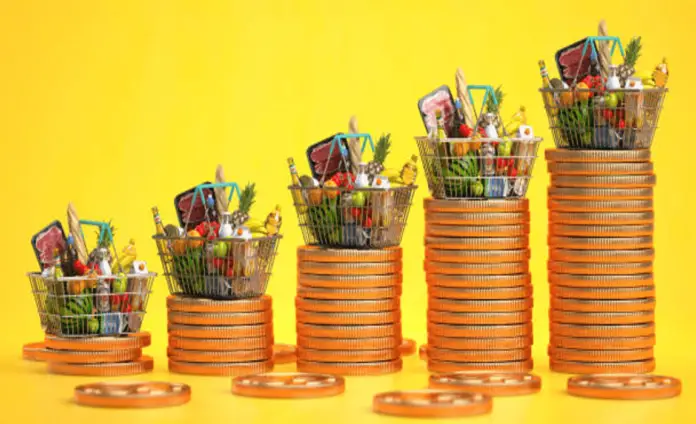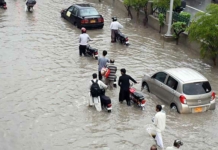Exports in 2019-2020 showed a growth of minus (-) 7.1%, but since then have increased substantially and grew by 13.7% in 2020-2021 and reached a growth rate of 27.8% in 2021-2022 or US $23.2 billion. At the same time, the growth rate of imports of Pakistan was minus (-) 16% in 2019-2020, increased to 24.3% in 2020-2021 and was 39% in 2021-2022, or US $59 billion
The Finance Minister of the PML(N)-PPP government, Miftah Ismail, has given an assessment of the PTI government’s economic performance 2019-2020 and 2021-2022 through the Economic Survey of Pakistan. Here is a brief comparison of the economic performance from July 2020 to June 2022 (All data is from Economic Indicators, Economic Survey of Pakistan 2021-2022).
GDP Growth: In July 2019-2020, Pakistan’s GDP growth rate was minus (-) 0.9% and in 2020-2021 went up to a robust 5.7% and in 2021-2022 was recorded at 6.0%. The dismal performance of Pakistan’s GDP growth in 2019-2020 can be attributed to the global lockdown due to COVID-19, but the revival of Pakistan’s economy in 2020-2021 and subsequently in 2021-22 should be credited to the PTI government’s policies of ‘smart’ lockdowns, giving incentives to the textile industry as well as the allowing of parking of ‘black’ money into the construction sector through the Amnesty scheme that enhanced productivity of many allied industries and employability of daily wagers into the construction sector of the country.
The PTI government also initiated a health card scheme for the health sector, one syllabus for all schools in the education sector, the planting of one billion trees to mitigate climate change, the introduction of ‘langer khanas’ and shelters for the homeless and people living below the poverty line, which reduced poverty level to 25% of the population and the country abided by SDG 1 and SDG 2 of no hunger and no poverty. The government also tried to initiate many structural reforms and price control mechanisms but failed due to adverse pressures from the private sector that did not want to be documented, and bad governance among the officials in the public sector.
Sectoral Growth
The growth rate of the agriculture sector of Pakistan in 2019-2020 was 3.9%, which came down to 3.5% in 2020-2021 and has shown a recovery by posting a growth of 4.4% in 2021-2022. Agriculture provides food crops, meat, dairy, fruits, fisheries, cash crops and forests. As well as non-farm mechanical activity in Pakistan. The contribution of agriculture to Pakistan’s GDP was 22.7% in 2021-2022 and it employed 37.4 million people, almost half of the civilian labour force in the country.
Interestingly, the contribution of food crops – wheat, rice and maize is only 3% of our GDP, the contribution of cash crops is another 3% to the GDP and the contribution of minor crops is only 2% to the GDP, farming contributes only 8% to the GDP and the rest of 14.7 % comes from animal farming, dairy farming and fisheries (12.7%) and another 2% from forests, that were increased by one billion trees during the PTI government.
The government’s investment in agriculture remained dismal, the contribution of small farmers in the market economy was almost nil and the problems facing agriculture were huge, like waterlogging, salinity, illiteracy among farmers, unavailability of productive variety of seeds, pest attacks, lack of water resources, climate change, the rising cost of use of fertilizers, pesticides, and mechanization to name a few. At the same time, the policy of giving cost-effective loans to farmers has shown results and the agriculture sector has posted 4.4% growth in 2021-2022.
The growth rate of the manufacturing sector of the country in 2019-2020 was minus (-) 7.8%, went up to a high performance of 10.5% in 2020-2021 and was 9.8% in 2021-2022, showing a slight decrease of 0.7%. The growth rate of the commodity production sector of Pakistan in 2019-2020 was minus (-) 0.6% and went up to 5.4% in 2-020-2021 and has passed a growth of 5.7% in 2021-2022. Manufacturing contributes only 12.4% to GDP of Pakistan, out of which, the large scale manufacturing industry contributed 9.2%, small scale industry contributed only 2%, and slaughtering contributed 1.4% to GDP of Pakistan.
The textile industry is the backbone of the manufacturing sector and textiles are the main exports of Pakistan that increased earning of foreign exchange for Pakistani exporters, the rest of our industry was mostly imported substitutes and did not significantly contribute to earnings of foreign exchange, rather the increase of imports of automatic and highly expensive machinery as well as raw materials and energy (petrol and LNG) for the industrial sector of Pakistan brought about the trade deficit in 2021-2022 and therefore the depreciation of Pakistani rupee against the US dollar that reached Rs. 202 to one dollar in June 2022.
The boost in the construction industry had both positive as well as negative impacts on the socio-economic picture of the country. The prices of construction materials went up by 100% and the affordability of houses for the middle classes in urban centres diminished and the impact of mushrooming of the housing industry encroached upon the fertile agricultural land around the cities, reducing agricultural output. This increased the prices of transportation of agricultural products from far-flung rural areas to urban centres, thus increasing the prices of agricultural products manyfold during this period of economic growth.
The parking of ill-gotten wealth of scrupulous sector of the society (called the Mafia) in the construction sector kept the tendencies of ‘bad’ governance in Pakistan at the cost of the law-abiding, hardworking and honest salaried classes and other tax-paying people whose standard of living went down because of heavy direct and indirect taxes on their incomes and spending. The question can be asked, if ‘black’ money was the main engine of economic growth during this period, then why was this amnesty scheme limited to the construction industry and not allowed to invest in other highly productive sectors of the economy.
The growth rate of the services sector of the country was minus (-) 1.2% in 2019-2020, went up to a robust 6.0% in 2020-2021 and has posted 6.2% growth rate in 2021-2022. The service sector contributes almost 70% to the GDP of Pakistan but this largest sector of the country contributes very little to foreign exchange earnings and reached US$ 5.2 billion. Only export of IT services showed an increase in our exports but this did not make a dent in the overall deficit of the balance of payment of Pakistan.
Exports of Pakistan in 2019-2020 showed a growth of minus (-) 7.1%, but since then have increased substantially and grew by 13.7% in 2020-2021 and reached a growth rate of 27.8% in 2021-2022 or US $23.2 billion. At the same time, the growth rate of imports of Pakistan was minus (-) 16% in 2019-2020, increased to 24.3% in 2020-2021 and was 39% in 2021-2022, or US $ 59 billion. The trade deficit in 2021-2022 reached 55.5% to more than US$ 30 billion as compared to US% 19.3 billion in 2020-2021. A huge amount of foreign exchange came into the country from Pakistan’s working and living abroad (almost two to three billion dollars a month in 2021-2022 due to the initiatives of the PTI government and the incentives given through the banking sector of Pakistan.
Remittances sent to Pakistan in 2019-2020 increased 6.4%, in 2020-2021 they increased by a record 27.3% and came down to 7.6% in 2021-2022, or US $23 billion. Foreign direct investment to Pakistan in 2021-2022 was US $1.65 billion and foreign portfolio investments inflow was US $ 0.16 billion and outflow was US $0.26 billion or a net inflow of US $ minus (-) 0.1 billion in the same period. The total foreign exchange reserves of Pakistan in 2020-2021 were US $ 27 billion that have declined to US $11 billion in 2021-2022 and the exchange rate of one US dollar to Pak rupee reached 202 by June 2022, further increasing the prices of essential commodities in Pakistan, with petrol price reaching Rs 209 a litre, CPI increased from 1,457.6 points in 2019-2020 to 1,797.5 points in 2021-2022, commodity prices of food, cooking oil, transport, housing and energy increased substantially after the change of government and interest rates were increased by this government to 13.75 points and therefore increasing both costs of living and cost of investment.
Apart from increases in local prices, the depreciation of the rupee and the increase in imports coupled with an increase in prices of goods, freights and services around the world due to the war in Ukraine have imported world inflation into the country thus making the life of middle classes, lower middle classes and the poor miserable. This increase in the misery of the people of Pakistan is magnified by the increase in taxation on them by the current government, therefore the economic gains have not been translated into social gains.
Growth rates are not a mirror of the social transformation of the society ad it seems because of the bad governess of governments in Pakistan and the callousness of the upper classes the income divide and the divided standard of living in the country are fast increasing, making the rich richer and the poor poorer, pushing the middle classes further down in the social ladder of Pakistan’s society. Only serious structural reforms both in administrative machinery, judiciary and economic viability can take out the vast majority of Pakistan’s people from their current quagmire of high inflation and a lack of income generation opportunities in spite of 6% economic growth.
The writer can be reached at [email protected]








Comments are closed.